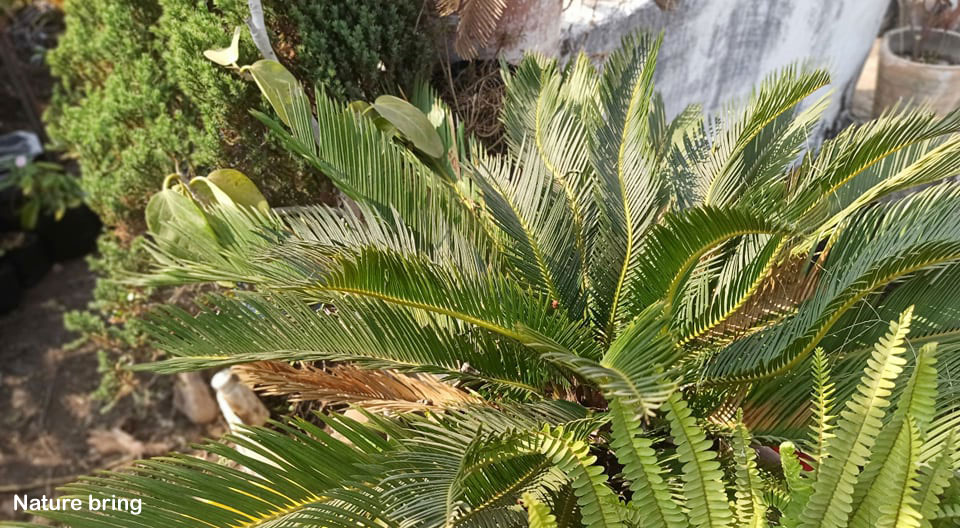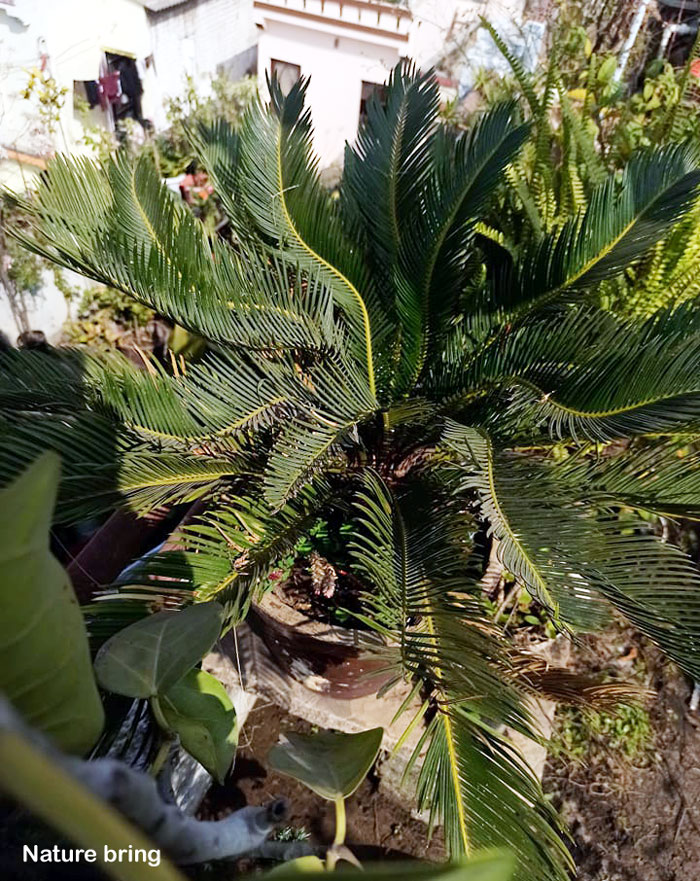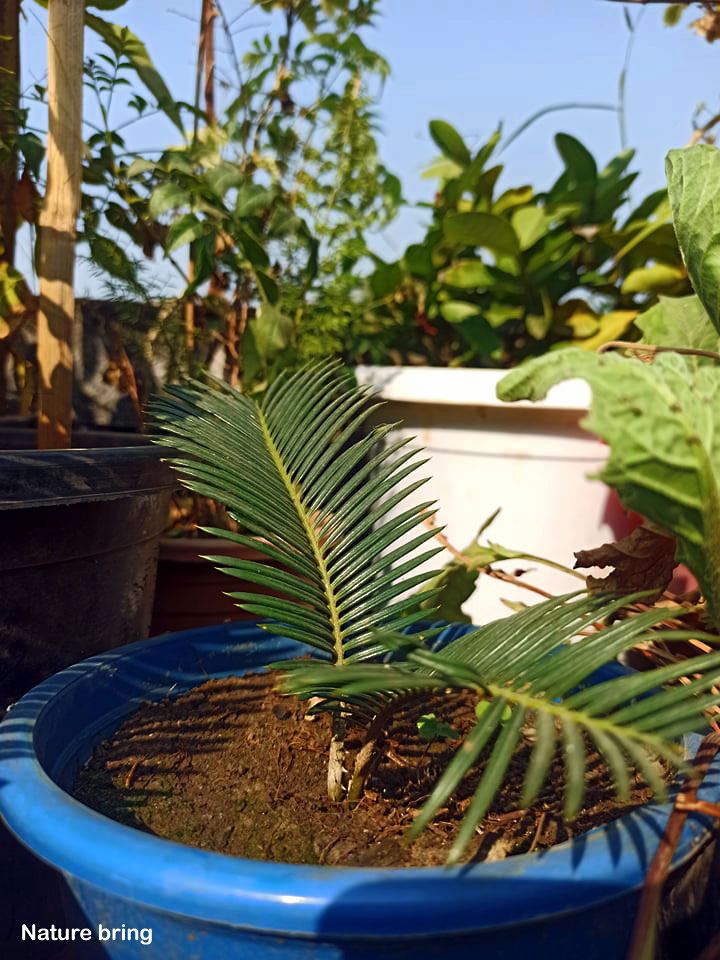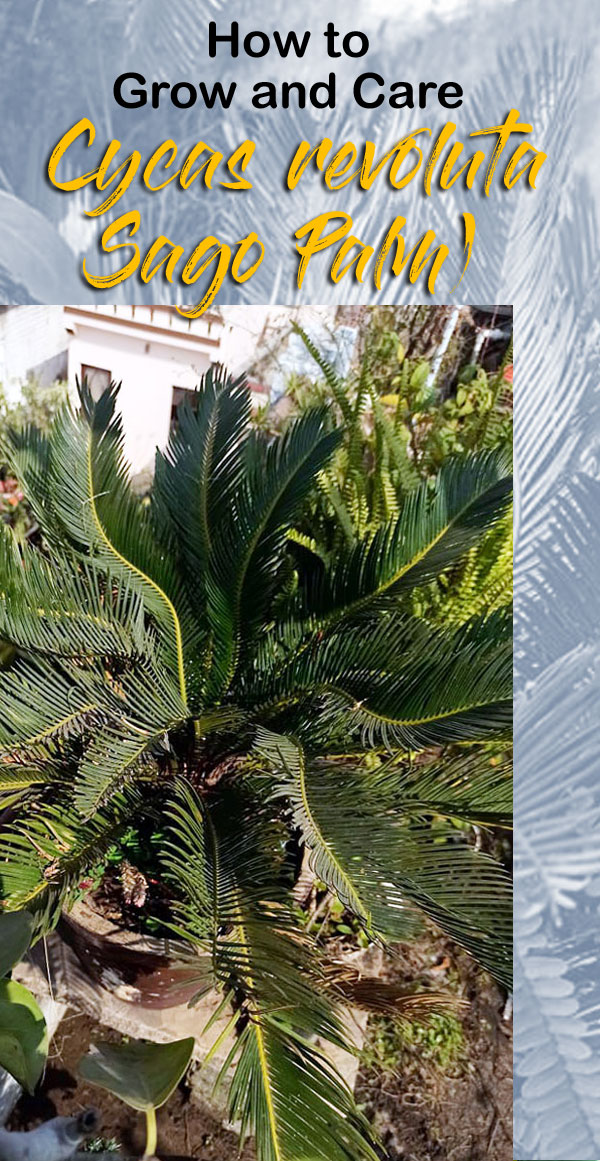Cycas revoluta (Sago Palm)
Cycas revoluta (Sago palm), also known as Sotetsu, king sago, sago cycad, and Japanese sago palms, are gymnosperms found in southern Japan, including the Ryukyu Islands. A variety of species of cycas plants is used as ornamental plants as well as for the production of sago.
Typically, this plant has a diameter of 20 cm or more and a thick, hairy trunk covered with shiny, dark green leaves. It can grow to a diameter of 6–7 m, but it is slow-growing and takes about 50–100 years to reach this size. It boasts multiple branched trunks which produce multiple leaves. During reproductive age, the plants have semi-glossy green leaves about 50–150 cm in length. As they grow, they form a rosette that measures about 1 m in diameter. Leaves are 8–18 cm long and strongly recurved or revolute in shape. Their basal leaflets are more like spines. The petiole, or stem, of the sago cycad, is 6–10 cm long and covered with small barbs for protection. Read also.
Overview of Cycas (Sago Palm)
Scientific Name Cycas revoluta
Common Name Cycas, Sago palms, Sotetsu, king sago, sago cycads, and Japanese sago palms.
Plant Type Perennial ornamental plants
Sun Requirements Full sun to partial sun
Soil Sandy soil with a slight acidity
Soil pH 5.5 -6.5
Zone 9-11
Read also
- 09 Different Types of Palm Trees.
- How to Grow Indoor Palm Tree.
- Growing and caring for Zamioculcas plants.
How to Grow and Care Cycas Plant
Growing from seeds
When handling the seeds, wear gloves since they contain toxins. To prepare the seeds, soak them in room temperature water so that they become soft and the outer husk falls off. Spread them shallowly on a tray or pot. Put the seeds in a warm place and cover them with a sand-based seed starting mix. Water the soil regularly as the seedlings grow. Wait there may be a delay in the result. Germination of sago palm seeds can take several months.
Growing from cuttings
Plant division is the easiest way to propagate. Sago palms produce pups or offsets, which resemble small plants at the plant’s base. By separating pups from their parents, more air is circulated in the plant base, which prevents crowding, water competition, and water waste. Earlier in spring or later in fall is the ideal time to transplant the pups.
Sunlight
Both full and partial sunlight are suitable for them, and they can be grown indoors in bright rooms with only a few hours of daily sun exposure. Keep them out of direct sunlight. Summertime heat can burn and wilt the foliage, while too much shade can cause the foliage to die and make the plant unhealthful. When growing indoors, choose a window facing east, west, or south.
Watering
The roots of these plants prefer to stay dry, as excessive watering will lead to rot. The soil mustn’t become soggy if you overwater. Touch the soil, and give water when it feels dry. During the winter months when the plant is not actively growing, reduce the amount of water you need to provide.
Soil
Ideally, sago should be grown in soil that is rich in organic matter and well-drained. Sandy soil with a slight acidity to neutral pH is ideal. The soil under your sago palms should be amended with good-quality compost every year or twice a year. In addition to improving drainage, compost is also beneficial for soils that are either too clayey or too sandy.
Temperature and Humidity
Although they can tolerate a brief period of cold weather, they are damaged by frost, and temperatures below 23 degrees Fahrenheit can result in death.
Sago palms have a preference for high humidity, so you may need to place a humidifier near the palms if the air in your home is extremely dry. Sago palms can survive in low humidity, but they grow poorly or do not look well.
Fertilizer
For best results, feed your plants monthly with a liquid fertilizer that contains an 18-8-18 ratio of nitrogen, phosphorus, and potassium and mix according to the package directions. To enrich their soil, sago palms planted in pots need to be fed twice a year, in spring and late summer. Do not fertilize your sago plant in the fall and during the winter. If you grow your plant in clay, a less porous medium, you will need half as much fertilizer. It is wise to fertilize right before a rain shower, so the plant food is better distributed.
Read also:
6 healing herbs you must grow in your garden. 10 Root Vegetables are easy to grow. Sedum plants growing and care tips. Plumbago auriculata grows and cares. Growing Sage plants in your garden. 09 Seasonal vegetables for June. How to grow anise plants. Growing Fruits tree indoors.
For pin:







